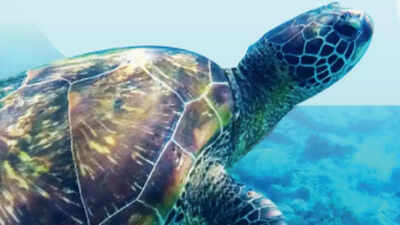- News
- City News
- navi mumbai News
- 2.5 lakh Olive Ridley turtle eggs laid in Konkan alone
Trending
2.5 lakh Olive Ridley turtle eggs laid in Konkan alone
Olive Ridley turtles have laid about 2.5 lakh eggs across the beaches in the districts of Sindhudurg, Ratnagiri, and Raigad in the ongoing hatching season. Approximately 25,000 hatchlings have been released with efforts to protect the vulnerable species from predators and other dangers.
NAVI MUMBAI: That the state’s rich coastline is fast becoming a haven for the phenomenon of the hatching of Olive Ridley turtle eggs can be best seen in the three districts of the Konkan region — Sindhudurg, Ratnagiri & Raigad. In the ongoing hatching season, Olive Ridley turtles have laid about 2.5 lakh eggs across beaches in these three districts. Research shows that only one in a 1,000 of these hatchlings survives to grow up to be an adult.

Only one natural hatchery is protected on the Alibaug coast. About 25,000 hatchlings have already been released into the sea. The forest department mangroves cell (south division) staffers and Mangroves Foundation volunteers are collecting the eggs to protect them till they are hatched.
The staffers and volunteers, after collecting the eggs, put them at hatcheries. The authorities have fenced off the hatcheries to protect the newborns from any danger.
The trend reveals that the endangered species have started laying eggs in the open instead of making a natural hatchery (digging holes and covering them after laying eggs) on the beaches and along the coast.
The nesting season is recorded between November and June every year with three months left in this season. The forest department expects that the number of hatchlings will see a sharp rise. The eggs normally take around two to three months on an average to hatch.
The divisional forest officer of the mangroves cell (South division), Kanchan Pawar, said, “All possible efforts are being taken for safe hatching of turtle eggs laid in the open by Olive Ridleys. New locations have been observed at Kihim beach in Alibaug, after nearly four decades.”
Range forest officer-mangrove cell (Alibaug), Sameer Shinde, said, “The effort of the Mangroves Foundation is laudable as they are playing a crucial role in conservation activities.”
Research done by experts shows that once the hatchlings make it to the sea, their survival rate is very low – about one in a 1,000 survives, says Mohan Upadhye, assistant researcher at Mangrove Foundation, which is part of the state forest department’s Mangrove Call. “These hatchlings face threats from many a predator once they crawl into the sea. Only one in a 1,000 of these babies grow up to become mature turtles,” points out Upadhye. This threat to their survival could even start along the coast itself where they tend to get gobbled up by golden jackals or even dogs.
Those who make it to sea can get eaten up by crabs or get entangled in fishing nets or face the threat of oil spill in sea waters, Upadhye points out, adding that at times these hatchlings tend to eat up shiny, transparent plastic bags, mistaking them for jellyfish. “That is one of the reasons why ban on plastic is required,” he says.
End of Article
FOLLOW US ON SOCIAL MEDIA









